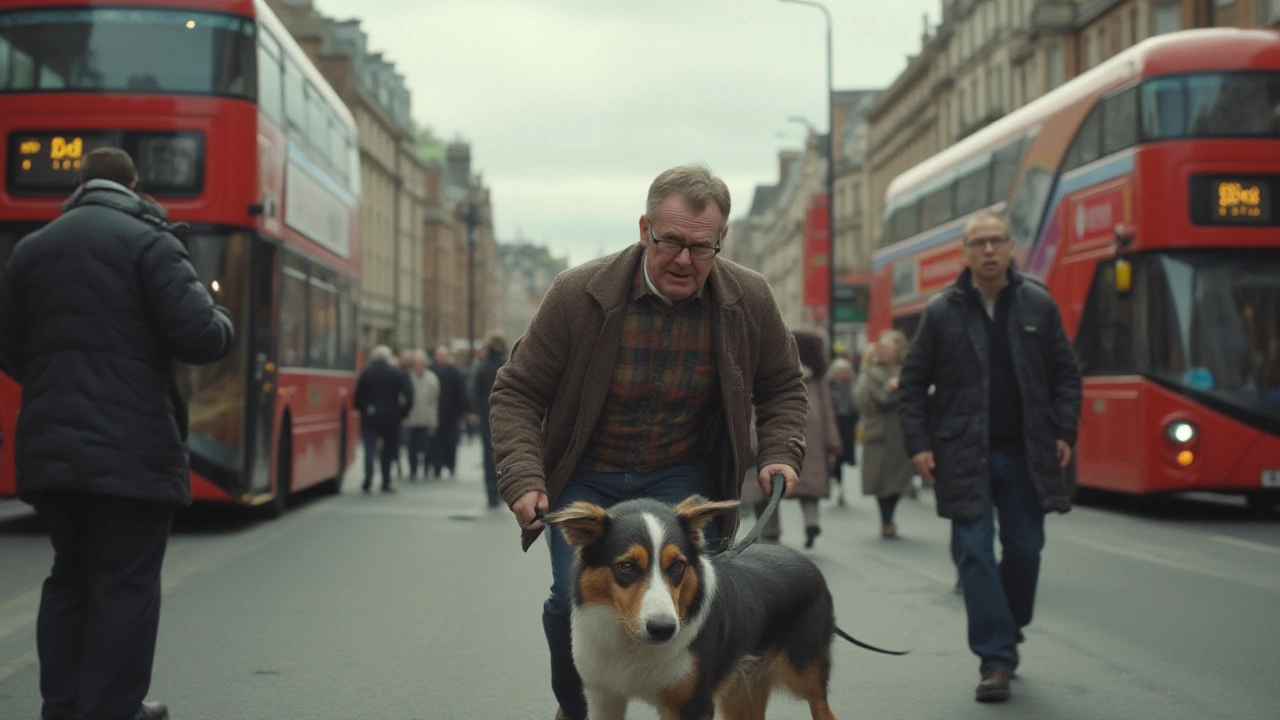Got sore shoulders after walking your dog? You’re not alone. Most people assume dogs just naturally walk nicely on a leash, like it’s an inbuilt feature that magically appears after puppyhood. But anyone who’s sprinted down a street while their dog chases a pigeon knows it’s not that simple. Dogs pull for all sorts of reasons—excitement, curiosity, maybe even a little stubbornness. The good news? You can absolutely fix it and finally enjoy those chilled-out strolls you see in advert photos. All it takes is a fresh perspective, some smart techniques, and a bit of patience—and probably treats, too. Let’s get into the real how-to of turning your leash tugger into your walking buddy.
Why Dogs Pull: Getting Into Their Heads
Dogs aren’t trying to annoy you when they pull. Most of them honestly think this is how walks are supposed to go. Leash walking is not a natural thing for dogs—imagine being told you can only move at the pace someone else chooses, with a string keeping you right there. That’s what it feels like for them. Instead, the world is full of smells, squirrels, and other dogs; every step is a new adventure, and they just want to get to the next one.
Puppies especially have zero impulse control. Their brains light up at every leaf and piece of rubbish, and they’ve got places to be—even if it’s just the next lamppost. Adult dogs might develop better manners, but it won’t just happen on its own. Remember, dogs who pull get to move forward, which feels like a win to them. That cause-and-effect loop is powerful. Each time your dog drags you to the park, that habit gets reinforced.
Some breeds are just built to move—with herding dogs like Border Collies always ready to go, and Huskies famous for pulling sleds (or their humans). But even the sleepiest Pug or fluffiest Shih Tzu can end up on the opposite end of the street before you know it. So, it’s not about the breed as much as it is about the energy and mindset.
There’s another side to pulling: some dogs might pull because they’re anxious. Busy roads, loud noises, or new people can make a dog feel nervous, and their response is to bolt out of the situation. Understanding this will help you choose the best training approach. A happy dog learns much faster than a worried one.
Decades of research into animal behaviour backs this up. A 2023 UK study published in the Journal of Veterinary Behaviour found that dogs trained with gentle, reward-based methods learned leash manners faster and enjoyed walks more than dogs trained with punishment or corrections. That makes sense—nobody likes a walk that feels like punishment, dog or human.
Gearing Up For Success: Tools That Help (And Ones That Hurt)
Let’s talk equipment. Not all leashes and collars are created equal, and the right gear can make your life much easier—or harder. A standard flat collar is fine for identification, but once your dog starts pulling, it’s basically an anchor. Harnesses, on the other hand, can redirect your dog’s energy, especially if they’re designed for front-clip use. Studies from the University of Lincoln show that front-clip harnesses reduce pulling by up to 70% in the first few weeks of training because they steer the dog toward you rather than letting them power forward like a steam engine.
Retractable leashes? Big no. They teach dogs that pulling means more freedom and more length, which is the exact opposite of what you want if you’re trying to build good leash habits. Plus, they can snap, tangle, or even injure you and your dog.
Some people suggest choke chains or prong collars, but these are a terrible choice, especially for pet dogs—not working or police dogs. Not only can they cause pain and injury to your dog’s neck or throat, but they also make walks stressful. Most modern trainers and vets strongly advise against using aversive gear. Instead, focus on management and positive reinforcement tools.
- Front-clip harness: Guides even strong dogs gently back toward you.
- Standard 1.5m leash: Gives control, keeps your dog close but comfortable.
- Treat pouch: You’ll need quick access to goodies.
- Praise and encouragement: Never underestimate a cheerful “good dog!”
There are tons of harness options—pick one that fits snugly and doesn’t chafe or limit your dog’s range of motion. If you’re not sure which to buy, ask your vet or local dog trainer for a recommendation.

Step-by-Step Training: Building Loose Leash Walking
Ready for the real work? Training your dog to stop pulling isn’t complicated, but it does require consistency—and yes, plenty of patience. Don’t worry, you don’t need to spend hours every day. Even ten minutes at a time makes a huge difference over a few weeks. The most popular (and science-backed) method is called “loose leash walking.” Here’s how you get started:
- Set Expectations: Don’t expect your dog to be perfect from day one. Start in a quiet spot, even your hallway or garden.
- Equip Properly: Put on their harness and attach the lead. Stand still and wait for them to stop pulling and relax the tension.
- Reward Calmness: When the leash goes slack—even for a moment—reward them with a treat and praise. Yes, it really is that simple at first.
- Step Forward (Slowly): Walk a few steps. If the leash stays loose, keep moving and keep rewarding.
- Stop and Reset: The moment your dog pulls ahead, freeze. Don’t yank back or get cross. Just wait. The second they look back or the leash slackens, reward and step forward again.
- Practice Everywhere: Once your dog gets it indoors or in your garden, slowly move to busier spots. Add distractions gradually—don’t rush.
- Stay Positive: Dogs learn faster with encouragement. Bring high-value treats like tiny bits of chicken or cheese for outdoor training.
This method turns the walk into a partnership rather than a tug-of-war. Your dog learns that pulling means no progress, but sticking close to you gets them all the good things—forward motion, treats, and happy praise. Remember, the stop dog pulling game only works if you stick with it every time you’re out. Sneaky inconsistency (“sure, he can pull just this once to get to the dog park”) only makes things harder in the long run.
Here’s a handy table summarizing the most effective training cues:
| Cue | What It Means | When To Use |
|---|---|---|
| Let's go | Your dog can start walking beside you | Anytime you’re ready to walk |
| Wait | Stop and pause beside you | Before curbs, doors, or distractions |
| Easy | Slow down, walk gently | When you feel your dog speeding up |
| This way | Change direction to refocus | When your dog is fixated on something ahead |
Mix up your pace and direction sometimes. Dogs learn faster when walks are fun and unpredictable. If your dog is chasing after a cat or another dog, just calmly turn and walk the opposite way—no drama, no shouting. Every redirection is a tiny lesson.
How to Handle Real-World Distractions
The local park is a minefield for leash learners: squirrels, barking dogs behind fences, bins full of mysterious smells—distractions everywhere. This is where most people give up and accept the pulling as “just how it is.” But you’ve already done the hard work at home. Now it’s about raising the stakes in a fun, manageable way.
Start by picking quiet routes with fewer triggers. Walk at off-peak times when crowds are thin. If your dog spots a pigeon or another dog, don’t tense up—your dog will sense it and get even more excited. Instead, use treats as a distraction, encouraging eye contact every few steps. The “watch me” game is perfect for this. Hold a treat near your face, call your dog’s name, and reward eye contact. Simple, but so effective for breaking their focus on distractions.
Distance is your friend. If your dog is absolutely obsessed with something ahead, put more space between you and the trigger. Cross the street or calmly circle away. Every time you successfully guide your dog past a distraction without pulling, you’re building confidence—for both of you.
A small study from University College Dublin in 2022 found that consistent leash training (minimum 4 sessions per week) reduced pulling behaviours in 85% of dogs by week eight, even for those with a history of pulling. The secret? Controlled exposure and lots of rewards.
Don’t forget to reward the small wins. Your dog might only manage two steps past a barking dog without pulling—that’s worth a treat. Progress is about more “yes!” moments and fewer battles. Dogs thrive on winning, so make it easy to win your game.

Staying Consistent: Dealing with Setbacks
Even the best-trained dog will have off days. Rain, wind, missed naps, or the sudden appearance of a noisy skateboarder—anything can throw your dog off track. Some days you’ll feel like you’re starting over. Please don’t panic. Setbacks are a natural part of learning, for both dogs and humans.
If your dog regresses or if pulling gets worse for a few days, scale back the challenge. Return to quieter spots or shorter, more focused sessions. Progress always speeds up after a break. Remember, the most common reason people fail at leash training is giving up too soon. Keep it light, keep it positive, and celebrate every bit of improvement.
One overlooked tip: make sure everyone in the household is on the same page. Kids, partners, grandparents—anyone who walks your dog needs to follow the same rules. Otherwise it’s confusing for your dog (“Why does Mum let me charge ahead, but Dad doesn’t?”). Consistency is boring for us but vital for them.
It’s also totally fine to reach out for help. Professional trainers who use positive reinforcement can troubleshoot specific issues, whether it’s nervousness, reactivity, or just boundless energy. Many trainers now offer online consults and video lessons, perfect if you’re in a rural spot or just want quick advice.
Lastly, remember why you’re doing this. Loose leash walking isn’t about “controlling” your dog. It’s about safety, comfort (for you and them), and being able to enjoy your time together. Trust that investing in training now means years of better walks. And isn’t that the dream—just you, your pup, and the world, setting your own pace at last?

